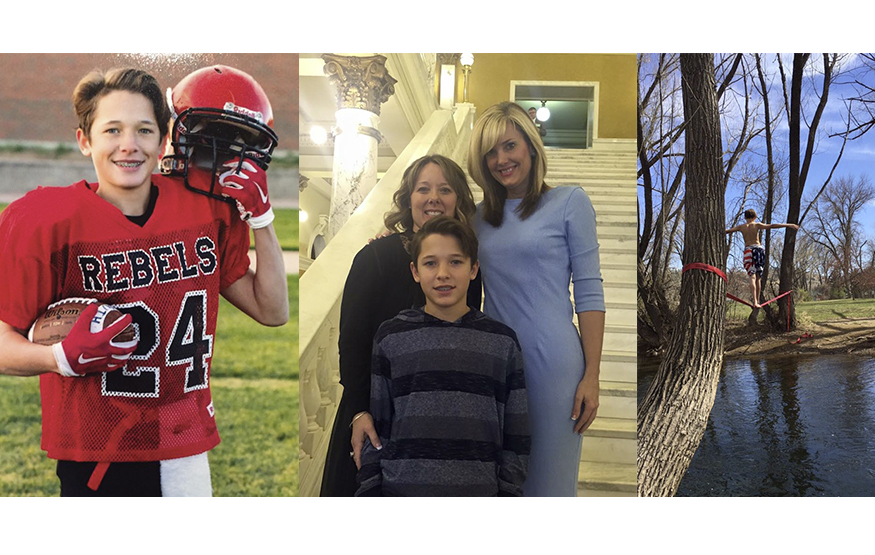Standing Up for Dyslexia
When Avery Boechler thought about the other kids who struggle to read, he got out of his comfort zone and testified in support of a legislative bill intended to change educational standards. “I did it to help everyone else out,” he says.
It made no sense. Avery Boechler was involved in student ambassadors, music, and his church. He ran track, played football, basketball, baseball, and soccer; he enjoyed rock climbing and slacklining. He succeeded at everything he did—with straight A’s to prove it—except when it came to reading and writing.
His mom, Tara, had definitely noticed “something” early on. Avery didn’t talk until he was four years old; by age five, he was advanced in some aspects of school, but certain things were hard for him to remember. Right and left were confusing; he couldn’t say certain common words, or tie his shoes. “It killed me as a mother, and especially as a reading teacher, as to why I couldn’t figure it out,” Tara says.
In first grade, Children’s Care Hospital referred Avery to Black Hills Learning Solutions, where Dr. Robert Arnio diagnosed their son with moderate to severe dyslexia. Finally, things began to fall into place—but not everything.
The Boechlers learned that dyslexia is a common learning disability, and according to the Dyslexia Center of Utah, one in every five students has a language-based disability. Dyslexia is a lifelong condition where people have difficulty identifying speech sounds and learning how to relate letters and words—but the rest of their brains work fine. Yale University research shows that in typical readers, “reading and IQ development are linked over time,” but in dyslexic readers, “reading and cognition develop more independently.”


So a high-functioning kid like Avery really could get straight A’s; he just couldn’t read or write like the other kids in his class. Most students who have been diagnosed can succeed and even excel with tutoring and alternative learning methods such as observing and listening.
In South Dakota public schools at the time, however, dyslexia accommodations weren’t so easy to come by. While the condition was “known,” the available help wasn’t quite making the grade for Avery.
Therefore, South Dakota State Representative Lynne DiSanto, along with other legislators, authored House Bill 1198, intended to expand dyslexia’s definition, as well as related provisions in the school system. Avery—along with several students, parents, educators, and professionals—testified in front of the Department of Education in Pierre last year in support of the bill. “It was kind of nerve wracking,” Avery recalls.
Kids can feel a lot of different emotions when their abilities don’t match with everyone else’s in their classrooms. But success comes in many forms. Avery learned that he is equal to the task of standing up for what he believes. “In life, if you have a challenge, you just need to go out and do something,” he says.
Two years ago, Avery landed a para-professional—an in-school tutor who helps with reading, writing, and math—along with other accommodations. Now, nothing can stop him.

Straight to the Top
Dyslexia has been included in the state’s Department of Education list of Specific Learning Disabilities for years, and general testing has been available. However, the accommodations for students with dyslexia—before House Bill 1198—allowed some kids to fall through the cracks, especially otherwise high-functioning students.
Two bills, the original dyslexia bill, HB1198, and a new one introduced in the 2017 session, HB1133, have stimulated the Department of Education to initiate a five-year plan to bring awareness of the learning disability to the forefront of education. “None of us wants to see students struggle,” says Secretary of Education Dr. Melody Schopp. “That’s one of the reasons why…a work group consisting of educators, higher education, parents, and school board members was created.”
South Dakota’s plan will increase knowledge about dyslexia in schools, and add screening strategies and updated tools. The plan also will include guidelines for university programs to include structured literacy and dyslexia training in elementary education and reading endorsement programs.
By Kristin Donnan
Reporting by Jenna Carda

